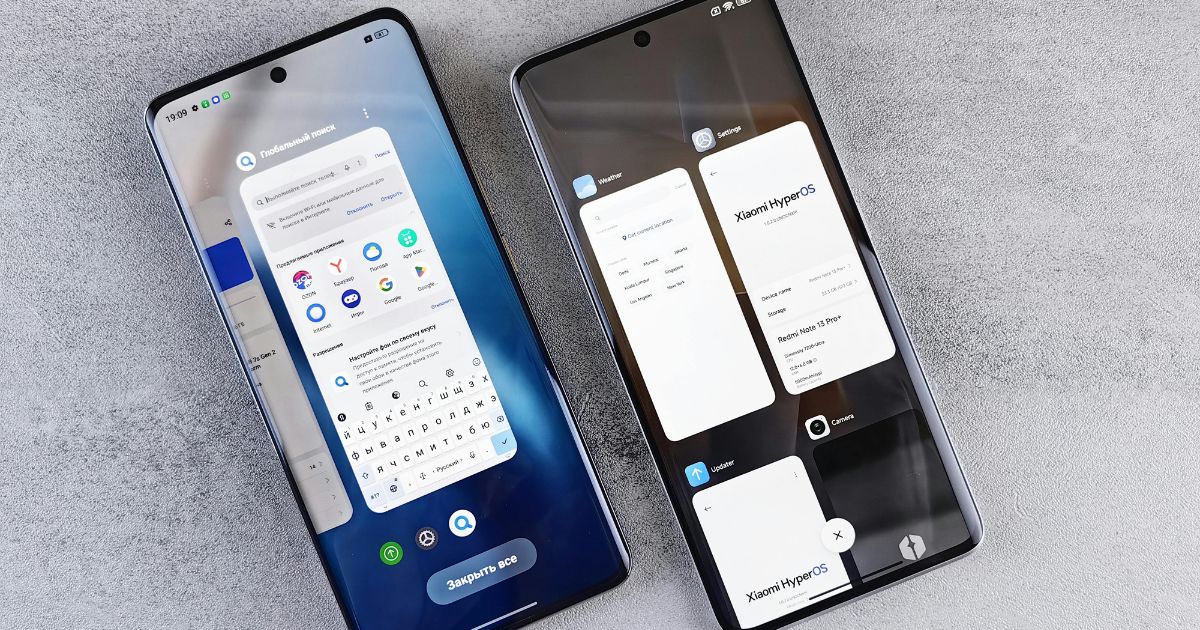With over 6 million apps available for download across the Apple App Store and Google Play Store, standing out from the crowd can be a daunting task. Fortunately, there’s a powerful tool at your disposal: App Store Optimization (ASO). ASO is a critical process for launching and maintaining your application, aimed at making your product page the best it can be. Similar to SEO for websites, ASO involves creatively and strategically using technical elements to increase visibility and improve search rankings.
The guidelines for app store submissions and listings are constantly evolving, making ASO an ongoing endeavor. Staying up to date with these changes is essential for maximizing your app’s presence and downloads.
In this guide, we’ll provide you with tips and strategies to optimize your app store presence, helping you navigate the complexities of ASO and ensuring your app gets the attention it deserves.
What is App Store Optimization?
App Store Optimization (ASO) is the process of improving an app's visibility and ranking within an app store, such as the Apple App Store or Google Play Store. This involves optimizing various elements of the app's listing. This also encompasses strategies to enhance user engagement and app ratings.
Why App Store Optimization is Important
ASO is crucial because it directly impacts an app's visibility and discoverability within the crowded app marketplace. Effective ASO ensures that an app appears higher in search results and relevant categories, making it easier for potential users to find. Higher visibility leads to increased organic downloads, reducing the reliance on paid advertising.
Moreover, a well-optimized app listing enhances user experience by providing clear, compelling information, which can lead to higher conversion rates. ASO also helps in targeting the right audience by incorporating relevant keywords and phrases that potential users are likely to search for.
Additionally, improving app ratings and reviews through ASO efforts builds credibility and trust, further encouraging downloads.
Ultimately, ASO drives sustainable growth, user acquisition, and retention, making it a fundamental aspect of an app's overall success strategy.
How Does App Store Optimization Work?
The process starts with keyword research to identify terms that potential users are likely to search for. These keywords are then strategically incorporated into the app's title, subtitle, and description. Visual elements like app icons, screenshots, and preview videos are optimized to be visually appealing and informative, showcasing the app's key features and benefits.
ASO also involves optimizing the app's performance metrics, such as user ratings and reviews, as these significantly impact the app's ranking. Encouraging satisfied users to leave positive reviews and promptly addressing negative feedback can improve the app's overall rating. Additionally, regularly updating the app with new features and improvements keeps it relevant and engaging for users.
By continuously analyzing and refining these elements, ASO helps increase an app's visibility, attract more organic downloads, and ultimately improve its overall performance in the app store.
App Store Listing Elements
Before we dive into how to perform ASO, it is important to understand all of the listing elements and what they are. Here are the different listing elements for Apple and Google with illustrative examples.
App Store Optimization: IOS
- App name: the app name is critical for ASO, affecting search rankings and user perception. It should be unique, memorable, and include relevant keywords for better discoverability, potentially increasing visibility and downloads.
- Subtitle: below the app name, the subtitle offers additional context about the app’s main features or purpose. It’s a chance to include secondary keywords and attract users, improving searchability and user interest.
- Icon: the app icon is the first visual users see. It should be simple, recognizable, and reflect the app’s functionality and brand identity. A well-designed icon can significantly impact click-through rates.
- All-time ratings: reflecting overall user satisfaction, high ratings increase trust and encourage more downloads, influencing app store rankings.
- App preview: a short video showcasing the app’s features, user interface, and experience helps convert views into downloads. A high-quality, engaging preview can boost conversion rates.
- Screenshots: visual representations of the app’s interface and features should highlight key functionalities and benefits to visually communicate the app’s value.
- Promotional text: this appears at the top of the app’s description to convey updates, offers, or unique selling points, capturing users’ attention and driving downloads.
- Description: the detailed overview of the app’s features, benefits, and functionality should be clear, concise, and keyword-rich to improve search rankings and inform potential users.
- Developer name: indicates the app’s creator, impacting user trust. Established developers or brands can leverage their name to attract downloads and build a loyal user base.
- Ratings and reviews: offers social proof of the app’s quality and user experience. Positive reviews and high ratings influence users’ decisions, enhancing the app’s reputation and ranking.

App Store Optimization: Android
Android has a few listing elements that are similar to those of iOS. These include the icon, app title/name, developer name, average/all-time rating, and screenshots. However, here are the differing listing elements that developers should pay attention to.
- Feature graphics/video: the feature graphic or video is a prominent visual element at the top of the app's Google Play listing, summarizing the app’s main features and capturing attention to drive conversions.
- Installs volume: the number of installs provides social proof of the app’s popularity and success, attracting more users who trust widely used apps.
- Category: the category indicates the app’s primary function, aiding users in finding relevant apps.
- Short description: below the app title, the short description summarizes key features. It should be compelling and include important keywords to capture users' interest and improve searchability.

14 Best Practices for App Store Optimization
To help you understand the inner workings of optimization for each listing element and help you understand how optimization works, we are going to provide explanations of how ASO can be implemented at each level.
1. Keywords
Keywords are vital for App Store Optimization (ASO), as they directly influence how your app is discovered. Understanding your target audience is crucial for selecting the right keywords.
There are two types of keywords:
- Short-tail keywords, which are general and highly searched but also highly competitive.
- Long-tail keywords, which are more specific, less frequently searched, but easier to rank for.
For new apps, focusing on long-tail keywords can improve visibility and increase the likelihood of downloads. As your app gains popularity, gradually incorporate short-tail keywords to further boost your ranking.
On the Apple App Store, the keyword field is dedicated solely to listing relevant keywords, with a limit of 100 characters. Use commas to separate keywords without spaces to maximize space. Avoid duplicates, plural versions of listed keywords, unauthorized terms, irrelevant terms, competitor names, and offensive terms.
For the Google Play Store, keywords should be naturally integrated into your app description to improve search rankings without overstuffing, which can lead to penalties.
2. App Name/Title
When optimizing your app name or title, it's best to keep it short and simple. A concise and memorable app name makes it easier for users to find and recall your app. Including relevant keywords enhances searchability, but they should be specific to your app’s functionality while avoiding overly generic terms that may get lost in search results.
Be mindful of character limits:
- Up to 30 characters for the Apple App Store
- Up to 50 characters for the Google Play Store
Make sure to use this space effectively to maximize impact. While keywords are important, avoid overloading the app name with too many, as this can appear spammy and negatively impact user perception.
3. Subtitle/Short Description
For the subtitle or short description, highlight the most valuable features and intended uses of your app. This helps users quickly understand what sets your app apart.
Incorporate keywords that are different from those used in the app name to broaden your app's search visibility. Write in a way that piques interest and encourages users to read the full description, using engaging and informative language.
The subtitle can contain up to 30 characters on the Apple App Store, while the short description on Google Play Store can have up to 80 characters.
4. Icon
A simple yet striking icon will do wonders for your click-through rate (CTR). Design an icon that clearly represents your app’s purpose, avoiding cluttering with too many elements or text. If your logo is already recognized, use a version of it for the app icon to ensure consistent branding, which helps users quickly identify your app.
Make sure the icon is high-resolution and looks good on all devices and screen sizes to enhance the app’s visual appeal across different platforms.

5. App Preview/Video
App previews or videos are essential tools for demonstrating your app’s functionality and user interface (UI) to potential users. To optimize these videos, highlight the most visually compelling aspects of your app within the first few seconds to captivate viewers and encourage them to watch more.
For the Apple App Store, you can include up to three individual 30-second videos, which play automatically on mute but can be unmuted by viewers. This means your video should be visually engaging even without sound.
For the Google Play Store, you can include one video of between 30 seconds and 2 minutes long, which does not play automatically, so ensure the thumbnail image is enticing enough to encourage users to click and watch.
6. Feature Graphic
The feature graphic, unique to Google Play Store product pages, is the main visual element users see when they click on an app. This graphic can be either a still image or a video. To optimize your feature graphic, make it as striking and visually appealing as possible. Avoid cluttering it with text; instead, use this space to captivate potential users with high-quality graphics.
7. Screenshots
For the optimization of screenshots, choose screenshots that are eye-catching and effectively convey the app's functionality and benefits.
On the Apple App Store, you can include up to 10 screenshots, with the first 1—3 being visible to the viewer before scrolling.
On the Google Play Store, you can include up to 8 screenshots, which will not be visible unless users scroll down the page.
8. Promotional Text
The promotional text field on the Apple App Store is a versatile tool that can be updated at any time without the need for app resubmission. This field, allowing up to 170 characters, is ideal for announcing new features, showcasing awards, or promoting sales and other relevant news to your users.
Since it doesn't affect keyword ranking, you don't need to worry about strategically placing keywords here. Instead, focus on making the text engaging and informative. Highlighting time-sensitive information like limited-time promotions or updates can capture users' attention and prompt immediate action.
9. Description
The app description is a crucial element where you can detail what your app does and how it provides value. Here are some tips to help you.
- Use natural, engaging prose that aligns with your brand’s tone to connect with potential customers.
- Start with a compelling hook in the first sentence to draw readers in.
- Highlight your app’s unique features, accolades, and a clear call to action (CTA) to drive downloads.
While both the Apple App Store and Google Play Store allow up to 4,000 characters, the approach differs slightly. On the Apple App Store, keywords in the description do not affect search rankings, so rather focus on a clear, readable narrative. This field can only be edited with a new app version submission, so plan your content carefully.
On Google Play, the description affects keyword ranking, so naturally incorporate relevant keywords without overloading them.
10. In-App Purchases
In-app purchases are a critical component for monetizing your app and enhancing user experience. On the Apple App Store, you can showcase up to 20 available in-app purchases before a user downloads your app. Each purchase can have its own name, promotional image, and description, which helps users understand what additional content or features are available beyond the base app. This transparency can encourage users to download the app knowing what they can purchase later.
On the Google Play Store, while the listing indicates whether in-app purchases are available, the specifics are not visible until after the app is downloaded. To optimize in-app purchases include the following:
- Clear descriptions: ensure each in-app purchase has a clear name, promotional image, and description.
- Value proposition: clearly communicate the benefits of each purchase.
- Visibility: make sure your in-app purchases are visible and easy to find within the app.
- Regular updates: keep your in-app purchases updated with new content or features to keep users engaged and encourage them to make purchases.
11. What’s New
The ‘What’s New’ section on your app's product page is crucial for communicating updates and improvements to users. This section appears prominently on both Apple App Store and Google Play Store listings. It’s an opportunity to highlight new features, bug fixes, improvements, and any other changes made to the app. To optimize this section:
- Clarity and detail: clearly outline what changes have been made. Use bullet points or short paragraphs to make it easy to read.
- Highlight key features: focus on features that are likely to appeal to users or have been frequently requested.
- Regular updates: keep this section updated with each new app release.
12. Ratings and Reviews
Ratings and reviews play a crucial role in influencing potential users’ decisions to download your app. They also affect your app's ranking in search results, particularly on the Google Play Store where keywords used in reviews can impact keyword ranking. To optimize ratings and reviews:
- Prompt responses: respond to user reviews promptly, especially to address concerns or issues. This shows that you value user feedback.
- Encourage reviews: prompt satisfied users to leave positive reviews. Consider using in-app prompts or notifications to encourage feedback.
- Address issues: use negative feedback constructively to improve your app.
- Maintain ratings: while Apple allows resetting ratings with each new version, use this feature sparingly. Resetting ratings may remove valuable feedback and deter downloads if not handled carefully.
13. Category
Choosing the right category for your app is crucial for maximizing visibility and reaching your target audience. In the Apple App Store, you can assign two categories—a primary and a secondary—which allows you to target multiple relevant categories and increase your app’s discoverability.
On the other hand, the Google Play Store only allows one category assignment, so it’s important to choose the category that best represents your app’s main functionality.
When selecting categories, ensure they accurately describe your app’s main function and purpose, and consider the competition and user intent.
14. Localisation
Localization of your app listing is also critical for appealing to users in different countries and driving downloads. It involves adapting your app’s listing to the local language, culture, and preferences of your target market. This includes using culturally appropriate graphics, imagery, and keywords that resonate with users in the local market. It’s important to have a native speaker help write your app listing to ensure it’s in natural, conversational language rather than a direct translation.
Improving Your Listing & A/B Testing
Improving your app store listing and conducting A/B testing are crucial for optimizing your app’s performance and increasing downloads. Regularly updating your listing with improved graphics, language, and keywords helps maintain or improve your ranking in the app stores.
A/B testing allows you to compare different versions of your app store listing to see which one converts better.
In the Apple App Store, you need to hire an agency to set up realistic-looking landing pages and track user behavior to determine the preferred version.
On the other hand, the Google Play Store provides an integrated A/B testing tool in the Play Console, making it easier to test and optimize your app store presence directly.
A Development Company with ASO Best Practices in Mind
At AppIt, we prioritize App Store Optimization (ASO) in every stage of app development. From design to research and user experience (UX), we integrate ASO strategies to generate positive reviews and enhance app visibility.
Our designs focus on intuitive UX/UI, encouraging user engagement and satisfaction, which in turn leads to higher ratings and positive feedback. Through iterative development, we continuously refine apps based on user feedback and analytics, maximizing performance and user satisfaction.
Contact AppIt today to discuss how we can build and optimize your app for success in the app stores.








